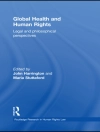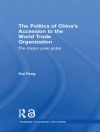The history of aroma and fragrance dates back through several ages and civilizations. The sagacity of smell plays a remarkable role for human beings to recognize food. Best fruits can be judged when they are ripe and fit for consumption emitting lovely smell or aroma. The same attribute from flowers attracts insects leading to cross-pollination. India has enjoyed a paramount place in the fabrication of quality perfumes and aromatics since the prehistoric era. The celebrated Chinese voyager Fa-Hien described India as the land of aromatic plants. Indian cities like Delhi, Agra, Kannauj, Lucknow, Jaunpur, Ghazipur, Aligarh, Bharatpur, Mysore, and Hyderabad emerged as centers of national and international trade in perfumery and other aromatic compounds, and were known for their quality across Asia, Europe and Africa. Aromatic plants precisely possess odorous volatile substances in root, wood, bark, stem, foliage, flower and fruit. The typical aroma is due to an assortment of composite chemical compounds. At present, information on the chemistry and properties of essential oils of only about 500 aromatic plants species is known in some detail out of a total of about 1500. Of these, about 50 species find use as commercial source of essential oils and aroma chemicals. It is realized now that perfumes are not the essentials of sumptuousness as they were in the past. It has given birth to new streams of medicinal therapy, aromatherapy, involving the use of essential oils and aromatics derived from plants to treat diseases. Essential oils are also reported to be better than antibiotics due to their safety and broad-spectrum activity. Natural essential oils are also potentially safe insecticides. The essential oil obtained from Acorus calamus having -asarone as an active principle produces sterility among a variety of insects of either sex. It has, therefore, been found very useful and secure for the storage of food grains. However, there is still very inadequate research for the cultivation of aromatic crops and extraction of essential oils across the globe. This book has been designed to highlight the associated issues of aromatic plants including the aspects of their classification, importance, uses and applications for human wellbeing, botany, agrotechniques, major bioactive constituents, post-harvest extraction, chemistry and biochemistry of aroma compounds along with an informative modern global research on these plants throughout the world. I hope this book will cater the scholastic services, reward diverse professionals and stakeholders, and serve as an informative handbook for theoretical as well as practical purposes.
Amit Baran Sharangi
Aromatic Plants: The Technology, Human Welfare and Beyond [PDF ebook]
Aromatic Plants: The Technology, Human Welfare and Beyond [PDF ebook]
ซื้อ eBook เล่มนี้และรับฟรีอีก 1 เล่ม!
ภาษา อังกฤษ ● รูป PDF ● หน้า 376 ● ISBN 9781536193985 ● บรรณาธิการ Amit Baran Sharangi ● สำนักพิมพ์ Nova Science Publishers, Inc. ● การตีพิมพ์ 2021 ● ที่สามารถดาวน์โหลดได้ 3 ครั้ง ● เงินตรา EUR ● ID 8062578 ● ป้องกันการคัดลอก Adobe DRM
ต้องใช้เครื่องอ่านหนังสืออิเล็กทรอนิกส์ที่มีความสามารถ DRM












